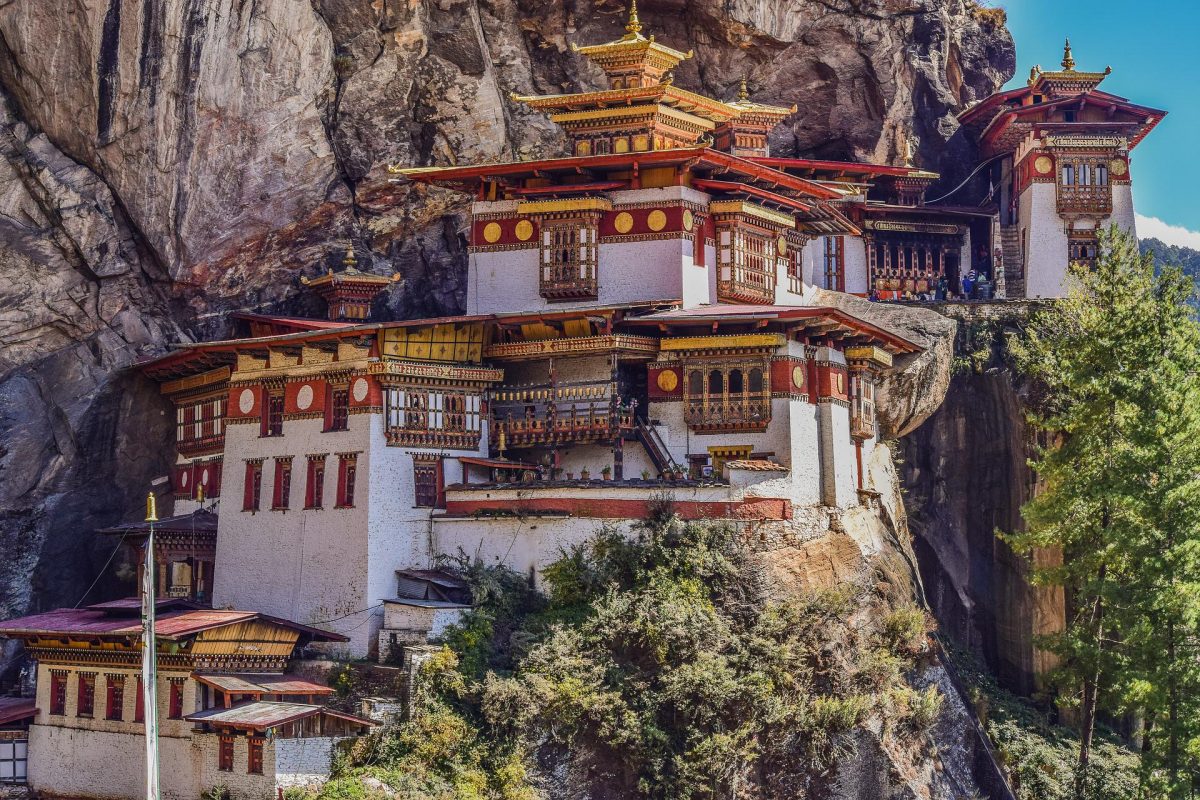Skift Take
You know travel is back when even the most-cautious country announces a no-quarantine reopening, even if it is three months down the line in September. But not before making it amply clear it wants to concentrate on quality tourists, rather than attracting droves to the destination.
Bhutan will finally reopen its borders without quarantine to tourists from September 23. However, foreign tourists coming into the landlocked South Asian country will now have to shell out a hiked sustainable development fee — $200 per person per night, compared to the earlier $65.
The fee hike would go towards offsetting the carbon footprint of tourists and upskilling workers in the sector, a government statement read. The $65 sustainable development fee had been introduced in 1991.
The 300 percent fee hike is a clear reflection of Bhutan’s bid to attract high-value and low-volume tourism, but tour operators share mixed sentiments as many feel it would make the destination less competitive, said a Bhutanese tour operator on conditions of anonymity.
“Even before the reopening was announced, we had received bookings from three European groups, but now, after the fee hike, we are not too sure if these groups would still go ahead,” the tour operator said.
With the reopening, the destination will be looking to focus on three areas — infrastructure and services, the travel experiences of tourists, and the sector’s environmental impact.
With the hike in the sustainable fee, Bhutan has lifted the minimum daily package rate for foreign tourists, which had been fixed at $250 per person per day in the high season, and $200 in the low season.
All foreign tourists in Bhutan, with the exception of Indians, Bangladeshis, and Maldivians had been required to pay a minimum amount that they would spend in a day, which covered accommodation, food, services of a tourist guide, transport, entry fees and the sustainable fee.
In 2019, a total of 72,199 minimum daily package rate-paying tourists visited Bhutan, generating a total gross receipt of $88.63 million.
Even as the government has done away with the minimum daily package rate, tourists are now required to pay a sustainable development fee which is almost equal to the amount they would be spending in a day, said a hotel owner, who refused to be named.
“However, this would also mean that the ones who do manage to come will be those with deeper pockets and would be more willing to spend,” he promptly added
No More Free Entry for Indians
The sustainable development fee would now also be applicable for Indian tourists, who had so far been granted free entry into the country. “Indian tourists will pay a previously stipulated fee, which will be revised at a later date,” said a communique from the Tourism Council of Bhutan.
According to a 2020 communication, the previously stipulated sustainable development fee for Indians was $16, less than 10 percent of what other overseas visitors pay. In 2019, of the 316,000 tourists that Bhutan received, 73 percent were from India.
While the decision to hike the sustainable development fee and the introduction of a fee for Indian tourists had been made in 2020, but it had yet to be implemented.
Bhutan did allow foreign tourists to visit the destination in due course, but a two-week quarantine for vaccinated tourists and three-week quarantine for those not vaccinated had put a damper on travel ambitions.
From April 25 onwards, Bhutan cut the quarantine time for fully vaccinated to five days and 10 days for the unvaccinated through air. However, land transfers were still banned.
The India Angle
Bhutan’s decision to prohibit movement of tourists by land also had an adverse impact on tourism in the Indian town of Jaigaon, with whom the Himalayan kingdom shares a border, as business in the border town came to a standstill.
Tour operators in India had been promoting Bhutan and Dooars — the floodplains in eastern-northeastern India, south of the outer foothills of the Himalayas — together as a tourism product.
As Indian vehicles were allowed to ply in Bhutan, tour operators from eastern Dooars operated land tours to Bhutan.
The Bhutan tours formed a large chunk of these itineraries with an overnight stay at Dooars thrown in, but with the closure of the Bhutan-India land border, the drivers and vehicle owners have been without business, said Samrat Sanyal, the general secretary of Himalayan Hospitality and Tourism Development Network.
“With the reopening of borders there is some hope of business revival in Jaigaon, but it remains to be seen if the sustainable development fee for Indians will have a bearing on travel plans even though we had been getting queries for Bhutan for the Indian festive season (around September-October) as well as for 2023,” Sanyal said.
Skift India Report
The Skift India Report is your go-to newsletter for all news related to travel, tourism, airlines, and hospitality in India.
Have a confidential tip for Skift? Get in touch
Tags: asia monthly, bhutan, climate change, destination marketing, fees, india outbound, sustainability
Photo credit: Bhutan is all set to reopen to tourists on September 23. suketdedhia / pixabay
